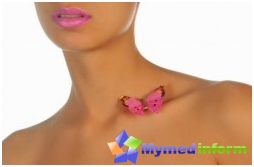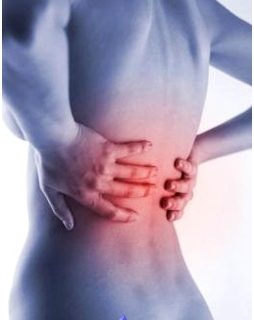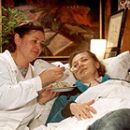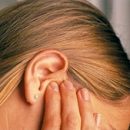Latin outlined the appendage as an epididamis. As you already guessed, it is this concept and formed the basis of the name of the pathology that we are talking about. Pudings - one of the most important pair bodies of the male reproductive system responsible for the full ripening of genital heights (spermatozoa) before they participate in the fertilization of the egg.
The appendage is a long (about 6 m!) Pretty hard tube, compactly compressed behind the egg. In general, the appearance of the appendage, figuratively speaking, relates it to the sperm: he also has a head, body and pointed on the end of the tail. It is noteworthy that acute epidididimitis can be expected without medication therapy for 4-5 days, but in most cases there is a danger that the disease will acquire a chronic form.
Clinical picture of the disease
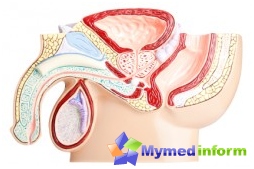
In the risk group are boys and men from 15 to 40 years. Often amazes pathology and elderly after 60 years. Depending on the nature and intensity of the flow, epididimitis is acute and chronic. The inflammatory process can spread to one or immediately on two eggs.
Indicative signs of epididimitis consider:
- feeling of gravity in the area of groin;
- pain of cutting character in the testicular;
- an admixture of a minor amount of blood in the urine;
- unusual discharge from penis;
- The patient is experiencing pain in the groin area while walking, corrupting natural needs.
Features of male physiology are such that the disease is more often exposed to the left testicle. The epididiment of the right egg and the bilateral defeat is much less common. If the epicenter of inflammation first became urinary ducts, the first painful symptoms are localized in the left side, and after a while moved to the groin.
The course of acute form of the disease

The main reason for the occurrence of epididimitis are bacteria. The following factors that cause inflammation of the appendages are distinguished:
- Retrograde infection - the most common cause of epididiment. Pathogenic microorganisms penetrate the fabric appendage from urethra and prostate.
- Hematogenic infection. Malicious bacteria penetrate the appendage with blood flow when a person is sick of pneumonia, a typhoid or flu.
- Contact infection. The inflammatory process originated in the testicle spreads to the appendage.
- Eagic injury.
- Weakening of immunity on soil of strong nervous overvoltage.
- Endoscopy's unsuccessful procedure.
- Parotitis with which the patient got sick in childhood.
- Tuberculosis.
- Large physical exertion (most often it concerns children).
Diagnosis of the disease
The diagnosis is confirmed by laboratory research. To do this, study the results of the overall analysis of blood and urine, as well as bacterial crops of microflora of urethra, which check for sensitivity to antibacterial drugs to choose the most effective treatment option. The next stage of diagnosis becomes a direct survey of urethra and scrotum. To determine at what stage of development is epididimitis, the ultrasound examination of the testicles and prostate.
Treatment of the disease

The basis of the treatment of any disease caused by bacteria is antibacterial drugs. MirSovetov recommends refraining from self-treatment by folk remedies, which can lead to a dangerous complication - embodent in the jacket area, which often ends with melting the appendage. Effective treatment must appoint a specialist.
If epididamitis pathogens refer to different types of pathogens, the treatment is likely to be a complex consisting of two antibiotics. Medications can be used intravenously, intramuscularly or orally, although the first method is considered the most effective. As a rule, the treatment continues at least 10 days.
Patients under the age of 40, prescribe the simultaneous reception of drugs Ceftriaxone and Doxycycline. Elderly patients and those who admire anal sex in intimate life (epididimitis in this case is caused by intestinal bacteria) and is not infected with a gonococcal or trichomonade infection, the combination of ciprofloxacin and sulfamethoxazole is prescribed.
Typically, the treatment of epididimitis does not require stationary conditions. In addition, some doctors have nothing against the treatment of folk remedies (against the background of medication therapy).
For example, for the weakening of the symptoms of the acute form of the disease, you can use the following vegetable agent: juniper (flowers), anise (fruits), dandelion (root), parsley and tolnaya (leaves) are mixed in equal proportions. Then 3 st. L. Mixtures are poured 1 liters of boiling water, covert the container with plants into wool fabric and insist several hours. So that the medicine has an action, drink it in large volumes - at least 1 l per day. Drink take a meal field for 7 days.
Fascinated violet (flowers), Toloknik (leafs), Wild beans (pods) and cornframes are used in the treatment of chronic epididimitis. These ingredients are mixed in equal portions and 1 h. L. Mixtures poured 200 ml of steep boiling water, after which it insists 3 hours. The healing agent is taken 3 times a day at 40 ml within 10-14 days.
Features of the treatment of a child suffering from epidididiment are certainly discussed with a pediatrician, because at such age antibacterial drugs can only be taken with a patient's body mass.
First aid in the acute form of the disease consists in cooling the scrotum (applying dry ice). To weaken the pain in the scrotum, the testicles are fixed in a raised state with melting. In addition, the patient recommend spending more time in bed and relax. Do not use alcoholic beverages, spicy and sharp products.
In the treatment of chronic epidididimitis, the main goal is not to bring the disease to the stagnant and sclerotization of the egg. Good effect can be achieved with the help of therapeutic baths and physiotherapy procedures (ultrasound, volc). In parallel with these events, the patient prescribe the reception of immunomodulators and non-steroidal anti-inflammatory funds.
Prevention of the disease

- Unprotected sexual contacts are possible only with a regular partner.
- Application of barrier contraception with random sexual communications.
- Responsible compliance with personal hygiene rules.
- Immediate fight against infectious and inflammatory diseases of the genitourinary system under the control of a specialist.



